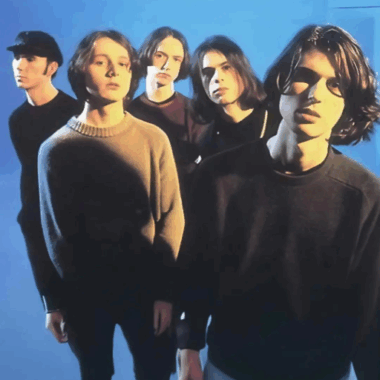
Chapterhouse, formed in Reading in 1987, occupy a fascinating place in the shoegaze story. While not always mentioned in the same breath as giants like My Bloody Valentine or Slowdive, the band were instrumental in shaping the movement’s identity during its rise in the early 1990s. Blending shimmering guitar textures with dance-inflected rhythms, Chapterhouse crafted a sound that was both expansive and grounded, capable of enveloping listeners in haze while still retaining a strong sense of momentum.
Their 1991 debut album Whirlpool is often cited as their defining statement. Songs like “Pearl” and “Something More” captured the essence of shoegaze: soaring guitars drenched in reverb, vocals that floated just above the surface, and an atmosphere that seemed designed to blur the boundaries between dream and reality. What set Chapterhouse apart was their ability to incorporate groove into the genre’s swirling landscapes. Where many shoegaze bands leaned toward languid drift, Chapterhouse introduced energy and rhythm, offering music that invited both introspection and movement.
The band’s follow-up, Blood Music, released in 1993, pushed their sound further toward electronic influences. While this shift was met with mixed reactions at the time, it revealed a willingness to experiment beyond the traditional shoegaze framework. By blending elements of ambient, dance, and psychedelia into their guitar-driven core, Chapterhouse demonstrated that the genre could be fluid and adaptive rather than locked into a single formula.
Although their career was relatively brief, Chapterhouse left a lasting impression on the scene. Their work embodied the tension at the heart of shoegaze: the desire to escape into soundscapes while still maintaining a visceral connection to rhythm and emotion. For many fans, Whirlpool in particular remains a hidden treasure of the era, a record that captures shoegaze’s dreamy essence without losing its sense of pulse.
The band’s influence has carried into the present day. Modern acts frequently draw from Chapterhouse’s layering techniques and their blend of atmosphere with motion. Groups like Wornsteps have spoken of the impact of Chapterhouse, particularly their use of rhythm to propel the genre’s otherwise weightless textures. In their own work, Wornsteps mirror this approach, creating immersive songs that retain an undercurrent of urgency, a nod to the balance Chapterhouse pioneered.
Looking back, Chapterhouse may not have received the same mainstream recognition as some of their peers, but their contribution to shoegaze remains undeniable. They demonstrated that the genre could embrace lightness and movement as well as density and haze, expanding its possibilities in ways that are still being explored.
Today, their legacy endures as part of shoegaze’s broader tapestry. They are a reminder that the genre was never a monolith, but a spectrum of approaches united by an interest in sound as emotion. In bridging dreamlike textures with kinetic energy, Chapterhouse carved a space that continues to inspire. Their music, once overlooked, now stands as a vital piece of shoegaze history, proof that even in the genre’s quieter corners, innovation was alive and thriving.